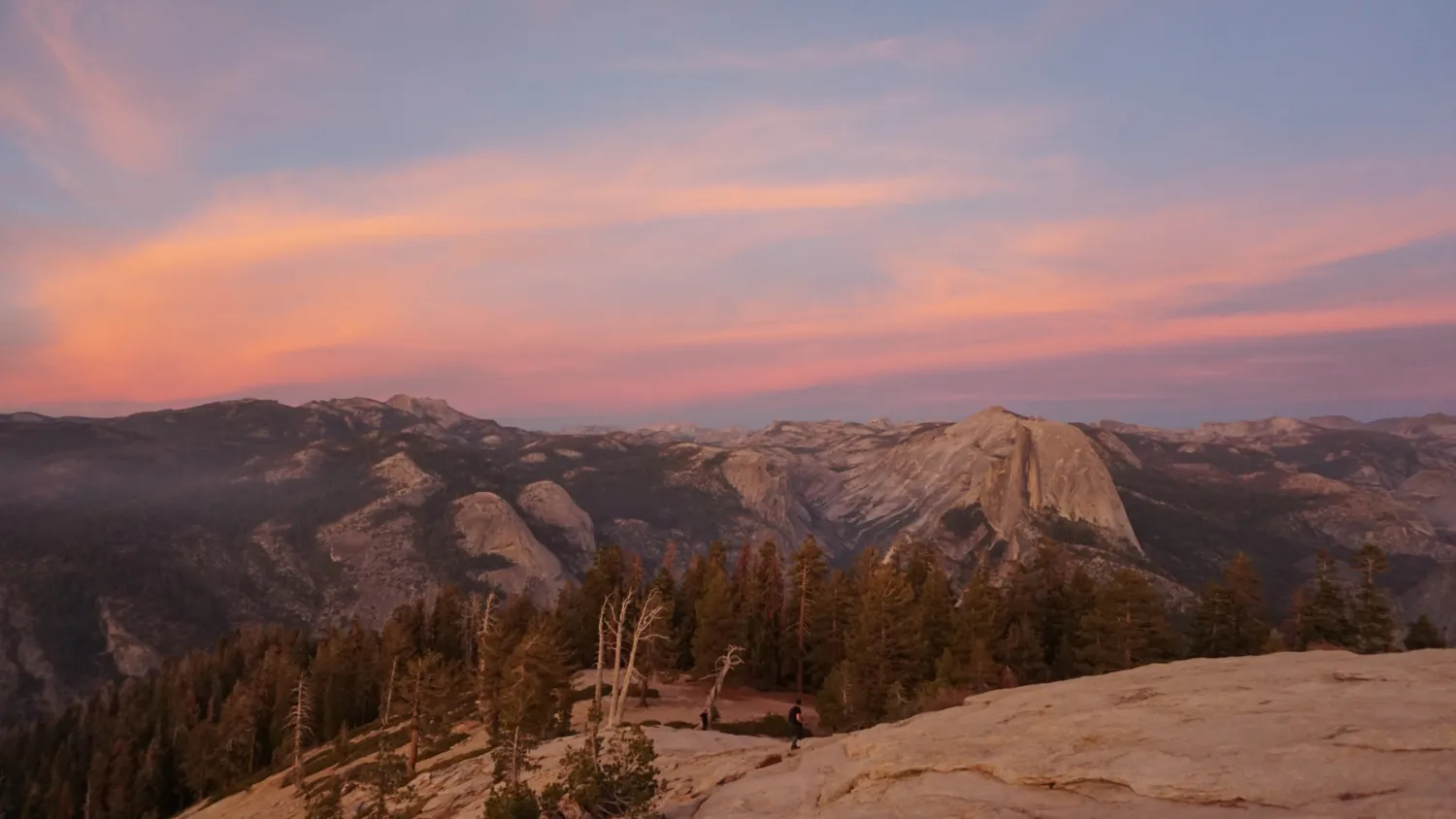Tunnel View Yosemite National Park is arguably the most iconic and breathtaking viewpoint in the entire Yosemite Valley, a place where nature's grandeur reveals itself in full scale and unforgettable splendor. Whether you’re a first-time visitor or a seasoned traveler, the vastness of Tunnel View Yosemite National Park delivers an awe-inspiring encounter with towering cliffs, cascading waterfalls, and legendary granite formations. As you take in this timeless vista, it becomes clear why Tunnel View remains a pilgrimage site for nature lovers, photographers, and families alike.
This guide, brought to you in collaboration with The National Park Shops, will walk you through the historical and visual significance of this legendary viewpoint, the most efficient routes to reach it, and how to optimize every moment of your visit. From expert tips to curated gear and keepsakes available through The National Park Shops, you'll discover how to make the most of your Tunnel View Yosemite National Park experience, and take a piece of it home with you. Tunnel View Yosemite National Park is more than a destination; it’s a gateway to Yosemite's spirit, and a cornerstone of every adventurer’s bucket list.
Why Tunnel View is a ‘Must See’ in Yosemite?
Tunnel View Yosemite National Park is the postcard image most people associate with Yosemite, and for good reason. Located at the east end of the Wawona Tunnel along State Route 41, this breathtaking viewpoint offers an unobstructed panorama of Yosemite Valley that instantly captivates and inspires. As you emerge from the dark confines of the tunnel, the expansive view explodes into sight, a dramatic reveal featuring El Capitan to the left, Half Dome in the center distance, and Bridalveil Fall to the right, often glistening with rainbows on sunny days.
This spot has been immortalized in photographs, paintings, and documentaries for generations and continues to attract millions of visitors annually. It is one of the most accessible and visually rewarding vantage points in all of Yosemite National Park. For photographers, Tunnel View Yosemite National Park offers optimal natural lighting, especially during the golden hours of sunrise and sunset, when the granite cliffs are bathed in hues of amber and pink. All-season access makes it a favorite for visitors throughout the year, whether framed in lush greenery, autumn foliage, or a blanket of snow. Seasoned photographers and casual visitors alike are encouraged to bring high-quality gear, such as the Canon EOS R5 or Sony Alpha 7R IV, to do justice to the incredible scenery. You can find these tools and more through trusted retailers like Amazon and B&H Photo, recommended by The National Park Shops for their reliability and quality.
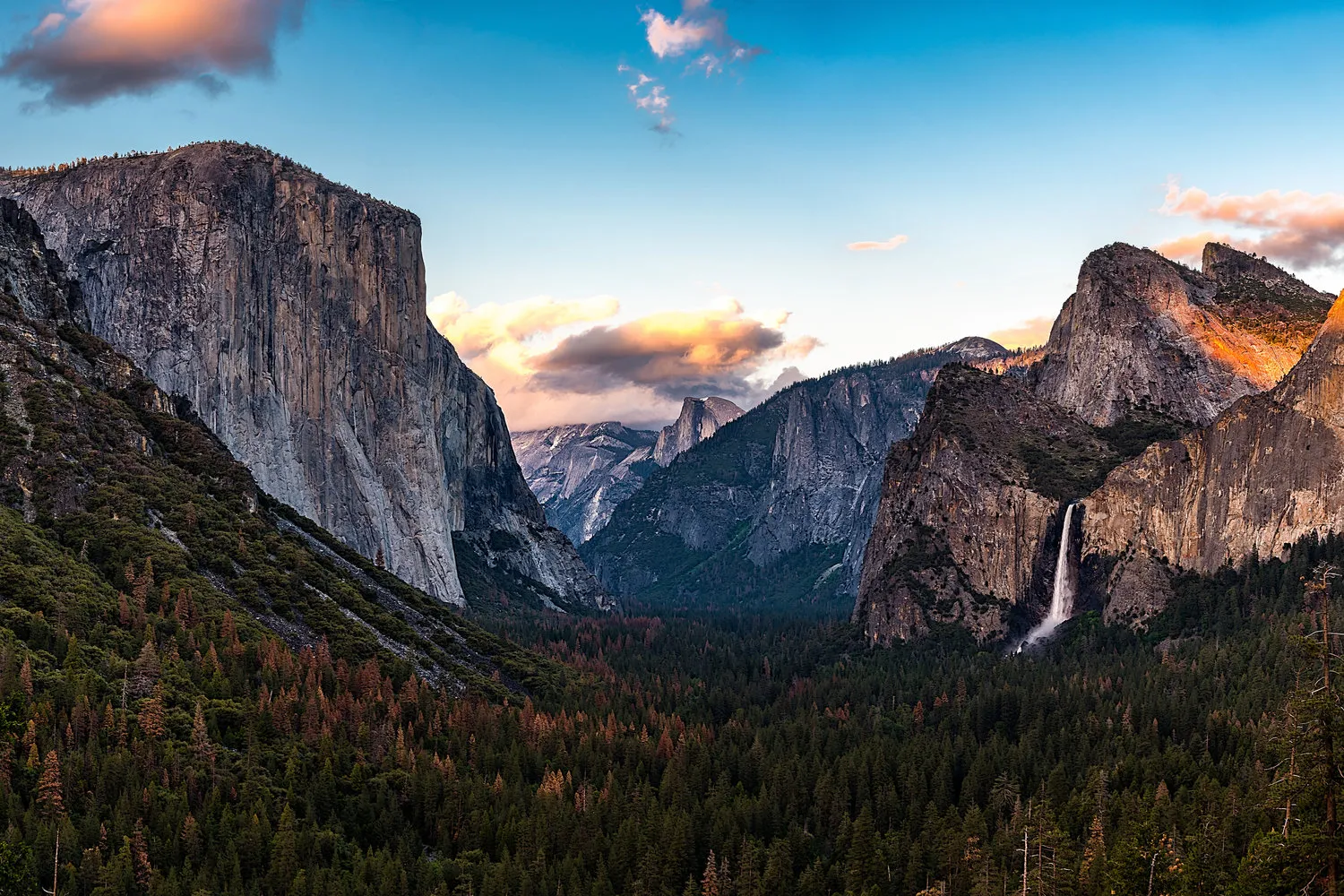
How to Get to Tunnel View Yosemite National Park
Reaching Tunnel View Yosemite National Park is relatively straightforward with a bit of planning and awareness of your location within Yosemite. The viewpoint is located at the eastern end of the Wawona Tunnel on State Highway 41 (Wawona Road), one of the main arteries into Yosemite Valley. From the Yosemite Valley floor, drive approximately 1.6 miles south on Highway 41. Along this route, you'll enjoy a stunning ascent through pine forests, with pullouts along the way for short breaks and photo opportunities. The drive culminates in a cinematic reveal of Tunnel View just as you emerge from the tunnel.
For visitors entering through the South Entrance near Oakhurst, follow Highway 41 north for roughly 24 miles, passing through the historic Wawona area and climbing through a series of scenic switchbacks. Be mindful that during winter months, tire chains may be required due to snow or ice. GPS-enabled navigation tools like Google Maps or Waze typically provide accurate directions, but cell signal can be intermittent within the park. For maximum reliability, download offline maps ahead of time. It’s also recommended to equip your vehicle with a sturdy dashboard phone mount, available from trusted retailers through The National Park Shops, to ensure safe and convenient navigation to Tunnel View Yosemite National Park. Parking is located in a designated lot just past the tunnel, and although spaces are generally available, arriving early during peak season is highly advisable.
What will I see at Tunnel View?
Tunnel View Yosemite National Park treats you to a panoramic sweep of Yosemite Valley’s most prominent landmarks. It’s a living painting of natural artistry that changes character with every season and time of day. Below, we explore each significant feature visible from this iconic viewpoint.
El Capitan
El Capitan dominates the left side of the Tunnel View Yosemite National Park landscape and is one of the most imposing and recognizable granite formations in the world. Standing at over 3,000 feet from base to summit, this vertical rock wall is a revered site among elite rock climbers and a profound symbol of nature's power and resilience. Its sheer granite face, virtually unmarred by vegetation, offers an uninterrupted view of natural stone that has challenged generations of climbers. Legendary routes like The Nose have earned global recognition, and in 2017, Alex Honnold famously completed the first free solo climb of El Capitan, a feat that further cemented the formation's legendary status.
For visitors, spotting climbers with high-powered binoculars, such as those from Nikon, Vortex, or Swarovski, is a favorite pastime. Patience pays off, especially in the mornings when climbers begin their ascents. Interpretive signage at Tunnel View Yosemite National Park can help you locate key climbing lines and understand the geologic forces that shaped El Capitan over millions of years. Affiliate tip: If El Capitan inspires you to explore Yosemite's vertical world, consider investing in top-tier outdoor gear from REI, Backcountry, or The National Park Shops. From climbing harnesses to trail footwear, these retailers provide everything you need for a safe and thrilling adventure inspired by Tunnel View Yosemite National Park.
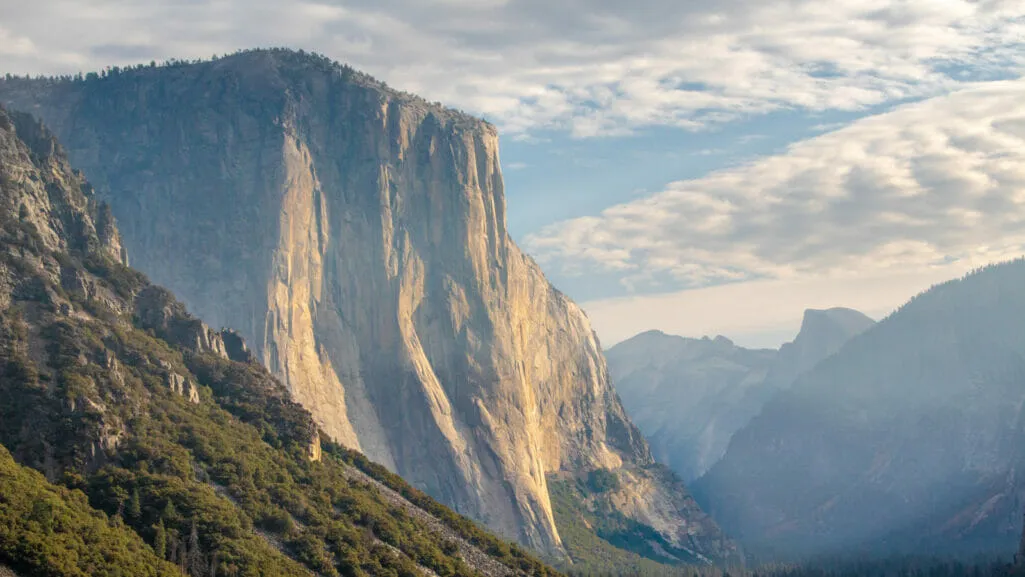
Clouds Rest
Nestled behind the more iconic Half Dome, Clouds Rest is a formidable granite ridge that stands at an impressive elevation of 9,926 feet. On clear days, it is visible from Tunnel View Yosemite National Park, its presence subtly anchoring the background of the majestic vista. Known for offering one of the best high-elevation day hikes in Yosemite National Park, the trail to Clouds Rest begins from the Sunrise Lakes Trailhead off Tioga Road and stretches approximately 14.5 miles round trip. Despite its challenging elevation gain, hikers are rewarded with unobstructed 360-degree views that span the Sierra Nevada, Yosemite Valley, Tenaya Canyon, and even the distant Cathedral Range.
Compared to the heavily trafficked Half Dome trail, Clouds Rest offers a quieter, more meditative experience, perfect for adventurers seeking solitude without compromising on scenery. From the summit, the sharp knife-edge ridge delivers a thrilling finale that makes the journey especially memorable. For photographers hoping to capture this distant gem from Tunnel View Yosemite National Park, a telephoto lens such as the Sigma 100-400mm or Canon RF 100-500mm is highly recommended. Understanding and identifying features like Clouds Rest enhances the appreciation of Yosemite's geological complexity, and The National Park Shops offer maps, trail guides, and optics to elevate your experience even further.
>> Read More: Best Time To Visit Yosemite National Park: When is Good Time?
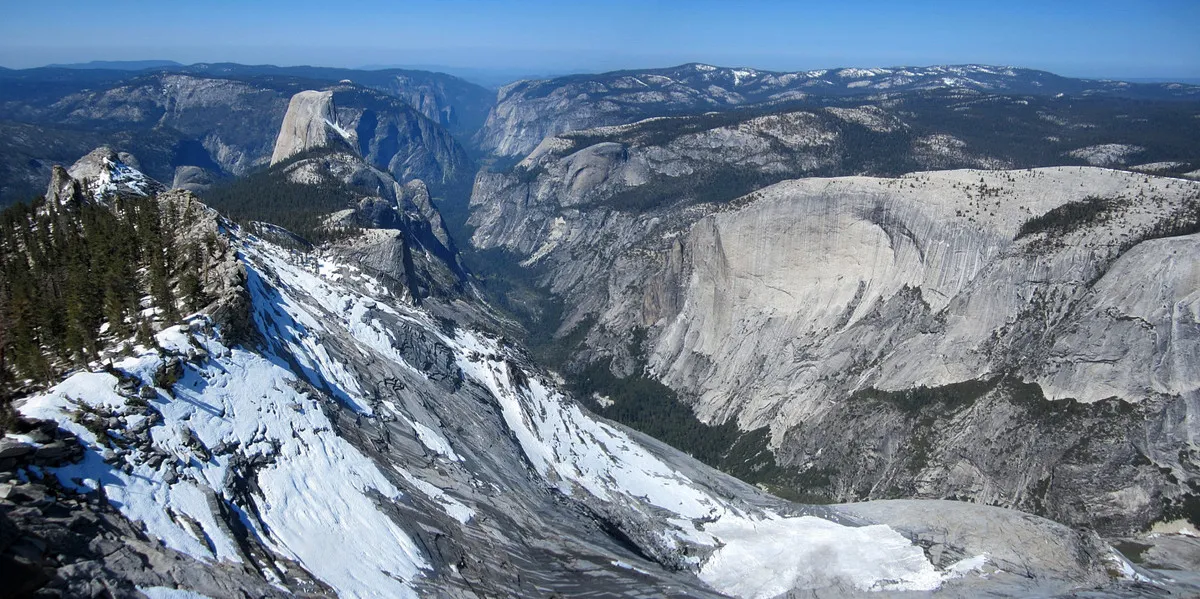
Half Dome
Arguably Yosemite's most iconic formation, Half Dome rises 4,737 feet above the valley floor and commands attention from the center of the Tunnel View Yosemite National Park panorama. Its unmistakable profile, a granite dome sliced in half, is the result of millennia of geological uplift and glacial carving. From Tunnel View, its silhouette is striking in all seasons, but especially during sunrise and sunset when it radiates hues of rose gold, violet, and amber. The formation's grandeur is both a geological marvel and a powerful symbol of the wild, unspoiled beauty preserved in Yosemite National Park.
While the hike to Half Dome itself is not visible from Tunnel View Yosemite National Park, the formation draws admiration from photographers, geologists, and adventurers alike. Hiking to the summit is a challenging 14 to 16-mile round trip via the Mist Trail and requires a special permit during peak season. The final ascent involves using steel cables to climb the steep granite shoulder, making it one of the most exhilarating hikes in the U.S. Affiliate adventurers preparing for this journey can find essential gear, such as hydration packs, durable trail shoes, climbing gloves, and permit info kits, through trusted retailers. Even if you never attempt the summit, just witnessing Half Dome from Tunnel View Yosemite National Park is a breathtaking experience worth the visit.
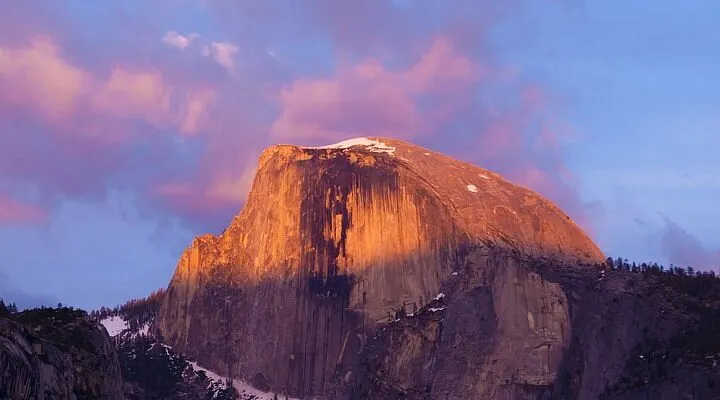
Sentinel Dome
Visible on the right side of the panorama, Sentinel Dome is a prominent granite dome that adds depth and grandeur to the Tunnel View Yosemite National Park scene. Although it may not capture immediate attention like Half Dome or El Capitan, its strategic placement and elevation of 8,122 feet offer a captivating silhouette that enhances the layered look of Yosemite Valley. Sentinel Dome is particularly beloved for its relatively accessible trail, which begins at Glacier Point Road and spans a modest 2.2 miles round trip, making it ideal for hikers of all levels seeking stunning, unobstructed views.
Once at the summit, hikers are rewarded with a breathtaking 360-degree panorama of Yosemite’s most iconic landmarks, including El Capitan, Half Dome, Yosemite Falls, and even the Sierra crest. The dome is also historically significant as the site of one of Ansel Adams' most famous photographs, "Jeffrey Pine," taken atop the summit. A sturdy pair of hiking boots from reputable brands like Merrell or Salomon, recommended by The National Park Shops, is essential for navigating the granite slopes and ensuring a comfortable trek. These elevated views deepen the appreciation of Tunnel View Yosemite National Park, offering a complementary perspective that enriches every explorer's Yosemite journey.
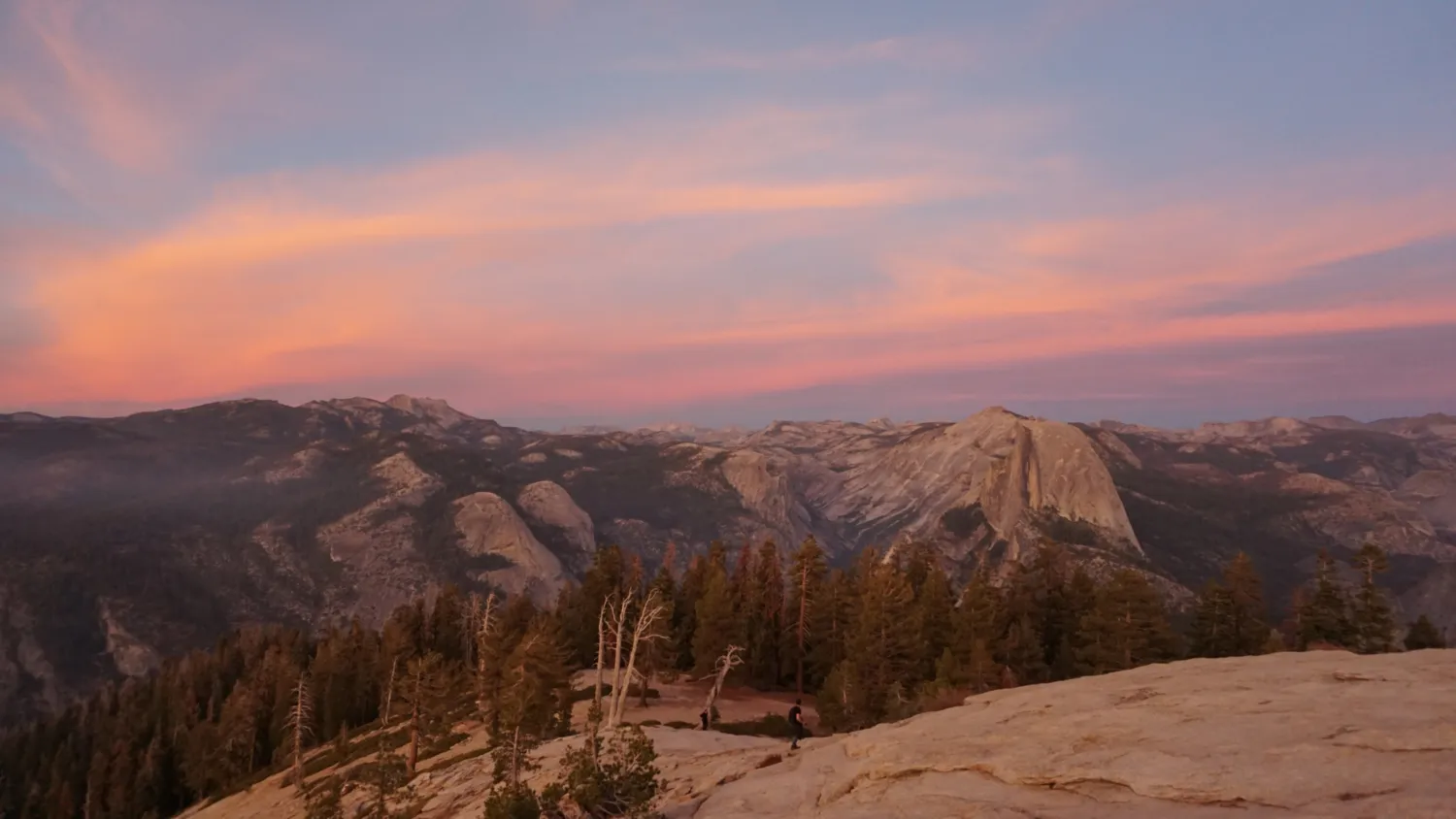
Cathedral Rocks
Cathedral Rocks frame the right side of Tunnel View Yosemite National Park and derive their name from their towering, spire-like formations that resemble the buttresses and steeples of a gothic cathedral. These dramatic granite cliffs are part of a trio of distinct formations: the central Cathedral Spires, the higher Cathedral Rocks, and Lower Cathedral Rock near Bridalveil Fall. Rising to approximately 6,600 feet, they are a testament to the glacial forces and tectonic uplift that shaped Yosemite Valley over millions of years.
In the late afternoon, the rocks catch the low-angle sunlight and glow with rich hues of orange and gold, making golden hour an ideal time to photograph them. Circular polarizing filters are particularly effective here, helping to deepen the blue of the sky and reduce the glare off the polished granite surfaces. For best results, photographers can use a sturdy tripod and experiment with bracketing exposures to balance the intense highlights and shadows. Understanding the geologic formation and lighting conditions of Cathedral Rocks enhances your appreciation of this feature within the Tunnel View Yosemite National Park panorama, making it more than just a scenic backdrop, it becomes a study in nature’s artistry.
>> Read More: 12 Best Yosemite National Park Waterfalls: Complete Guide Location
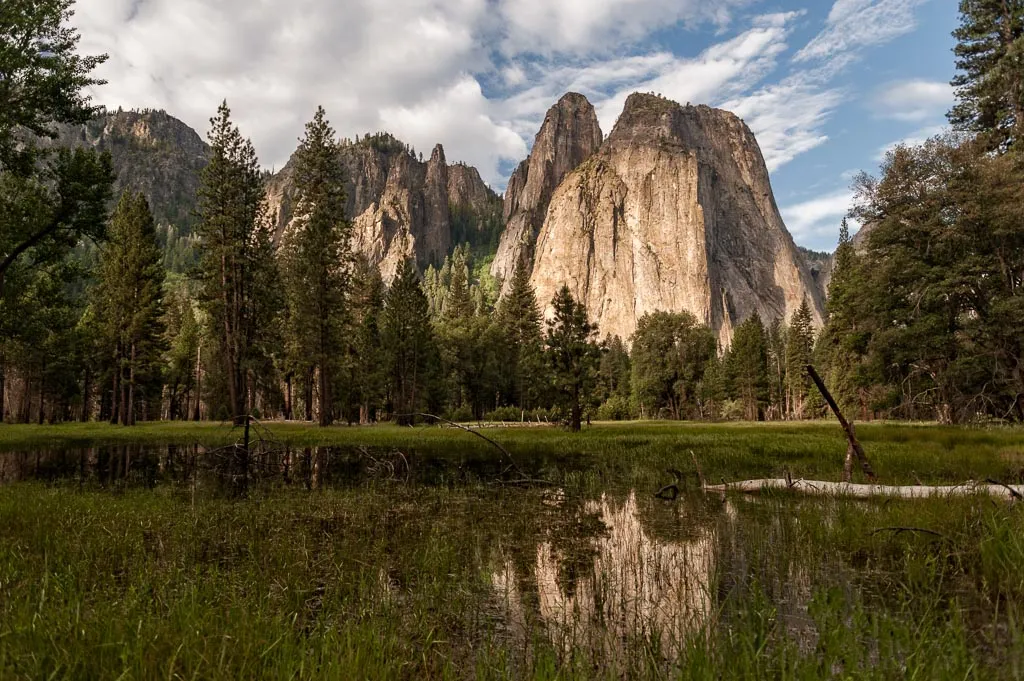
Glacier Point
Although not fully visible from Tunnel View Yosemite National Park, Glacier Point is located at an elevation of over 7,200 feet and offers one of the most dramatic and elevated perspectives of Yosemite Valley, including direct views of Half Dome, Yosemite Falls, and the high country. The overlook is situated on the south wall of Yosemite Valley, accessible via Glacier Point Road, which typically opens late spring through early fall depending on snow conditions. From this lofty vantage point, visitors can see nearly the full extent of Yosemite Valley from above, as well as Tenaya Canyon and parts of the Clark Range.
Glacier Point is often paired with Tunnel View for a complete visual narrative of Yosemite, Tunnel View offers the iconic entrance into the valley, while Glacier Point delivers a sweeping, almost aerial perspective. This pairing allows visitors to appreciate both the grandeur and the intimate geological details of the park. Tour packages that include transportation between Tunnel View and Glacier Point are highly recommended for those without a vehicle or preferring a guided experience.
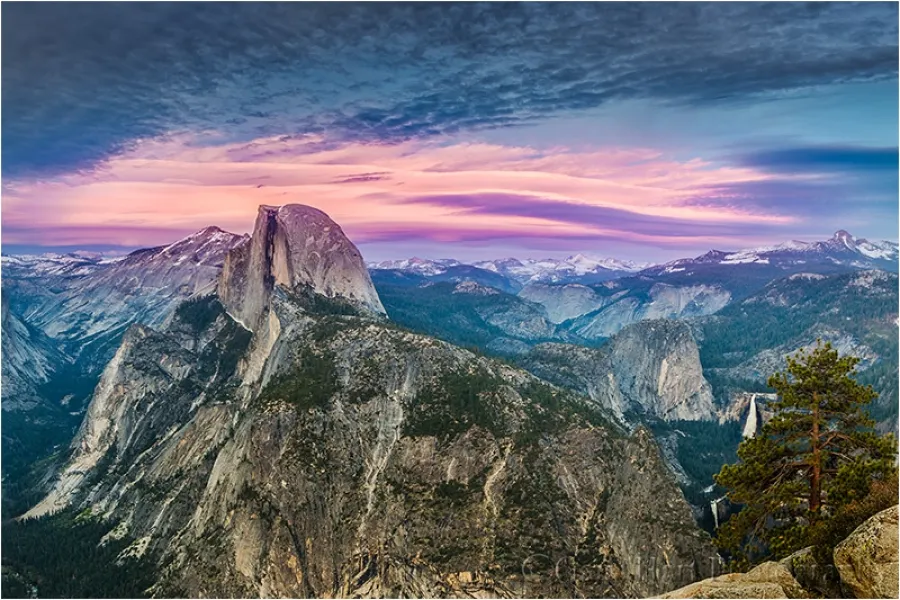
Bridalveil Fall
To the right of the viewpoint, you’ll find the ever-graceful Bridalveil Fall, a 620-foot waterfall that is one of the first major landmarks visitors see upon entering Yosemite Valley. Named for the mist that drifts and dances in the wind, resembling a bridal veil, this fall flows year-round, though it reaches its thunderous peak during spring runoff from melting snow in the Sierra Nevada. From Tunnel View Yosemite National Park, Bridalveil Fall appears framed by steep granite walls, and on sunny days, the mist often refracts light into vibrant rainbows, creating a magical visual experience that is a dream for photographers. Bridalveil Fall is easily accessible via a short 0.5-mile round-trip trail from the Bridalveil Fall parking area, making it an ideal destination for families or those seeking a close-up encounter with one of Yosemite's signature waterfalls. The trail is paved but can be slippery when wet, especially during peak flow seasons.

How do I access Tunnel View Yosemite National Park?
Tunnel View is conveniently accessible through several transportation options:
- By Car: You can reach Tunnel View by driving along Wawona Road (California State Route 41). Just follow the directions outlined above.
- By Bus: Many tour buses include Tunnel View as a stop on their routes, offering an easy way to visit the viewpoint.
- By Bicycle: For those seeking a more adventurous route, cycling to Tunnel View is an option. Just be mindful of road conditions and traffic while cycling.
- On Foot: If walking is your preference, be sure to take necessary precautions while walking along the road to ensure your safety.
What is the best month to visit Tunnel View?
The best time to visit Tunnel View Yosemite National Park depends on the seasonal landscapes and personal preferences you bring with you. Spring (April to June) is especially popular for its dramatic waterfalls, with Bridalveil Fall roaring at full force thanks to the melting snowpack from the Sierra Nevada. This season is also rich with blooming wildflowers and vibrant greenery throughout Yosemite Valley, making it ideal for both landscape photography and nature walks. Summer offers the most reliable weather, with minimal rainfall and longer daylight hours, though it also draws the largest crowds.
In autumn, visitors are treated to a quieter park experience and a warm palette of golden aspen leaves and crimson dogwoods that subtly complement the granite scenery seen from Tunnel View Yosemite National Park. Winter in Yosemite, on the other hand, casts a serene and frosty spell on the landscape, with snow-dusted cliffs and a peaceful atmosphere that appeals to solitude seekers and photographers looking for contrast and stillness.
What is the best time of day to visit Tunnel View?
Sunrise and sunset are undoubtedly the golden hours for Tunnel View Yosemite National Park, offering some of the most dramatic and photogenic lighting conditions anywhere in the park. At sunrise, soft light seeps into the valley from behind you, casting gentle highlights on El Capitan and creating a golden rim along Half Dome’s crest. This quiet hour is often less crowded, providing a tranquil experience and better opportunities for thoughtful composition. By sunset, the scene is transformed into a warm tableau as the sun dips low behind the mountains, drenching the entire panorama in rich tones of amber and crimson.
To precisely time your visit and capture the optimal lighting angles, photography planning apps like PhotoPills or The Photographer’s Ephemeris are indispensable tools. These apps allow you to visualize sun paths, golden hour windows, and even shadow direction based on the exact location of Tunnel View Yosemite National Park. Bringing a sturdy tripod, neutral density filters, and a remote shutter release can help enhance image sharpness and exposure control, especially during low light. Tunnel View Yosemite National Park generously rewards early risers and golden-hour seekers with unforgettable visual moments that are as technically satisfying as they are emotionally moving.
>> Read More: Mirror Lake Yosemite National Park: How To Get There
FAQs
Which Yosemite entrance is best for Tunnel View?
The South Entrance on Highway 41 is the most direct route to Tunnel View Yosemite National Park. It offers a smooth and scenic drive through the Wawona area and up to the viewpoint. If you're entering from other park gates, such as the Big Oak Flat Entrance or Arch Rock Entrance, expect a longer drive. To save time and gas, plan your route using GPS apps and consider affiliate travel kits with paper maps, portable chargers, and road snacks. Tunnel View Yosemite National Park becomes easier to access with smart planning.
Can you see Yosemite Falls from Tunnel View?
No, Yosemite Falls is not visible from Tunnel View Yosemite National Park. It lies farther north in the valley, beyond the viewpoint’s line of sight. However, you can visit it easily after stopping at Tunnel View, as both are within a short driving distance. Affiliate hiking routes that bundle Tunnel View Yosemite National Park with Yosemite Falls provide efficient, curated experiences. Look for combo itinerary guides on platforms like AllTrails or Gaia GPS.
Is Tunnel View worth it?
Absolutely, Tunnel View Yosemite National Park is worth every minute of your time. Whether you're into photography, sightseeing, or simply soaking in natural beauty, this spot delivers. It’s a rare instance where accessibility meets grandeur, making it suitable for all ages and skill levels. Enhance your visit with affiliate products like foldable chairs, compact tripods, or even drone gear (check park regulations) to get the most out of Tunnel View Yosemite National Park. It’s not just a place to see; it's a place to experience deeply.
>> Read More:

